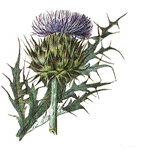Papers in the Biological Sciences

Svata M. Louda Publications
Document Type
Article
Date of this Version
1998
Abstract
The insect Rhinocyllus conicus Froehlich is a flowerhead weevil deliberately introduced into the United States for the biological control of invasive exotic thistles in the genus Carduus. This study documents the course and magnitude of the weevil population expansion onto nontarget host plants. No weevils were reared from either Platte thistle, Cirsium canescens Nuttall, or wavyleaf thistle, C. undulatum (Nuttall) Sprengel, from 1977 to 1993 at 2 Sandhills prairie preserves: Arapaho Prairie and Niobrara Valley. For Platte thistle, the number of both R. conicus adults on plants and the number of larvae developing in flowerheads increased significantly from 1993 to 1996. Population growth lagged at the north-central Niobrara Valley site, compared with the southwestern Arapaho Prairie site, but by 1996 the densities attained were similar. For wavyleaf thistle, a later flowering native species, the 1st weevils were also observed in 1993 at both sites. However, weevil densities on wavyleaf thistle grew more slowly and remained significantly lower than those on Platte thistle. The most likely hypothesis to explain the greater use of Platte thistle, compared with wavyleaf thistle at these sites, is greater phenological synchrony of its flowerhead development with R. conicus oviposition activity. The results suggest that inclusion of ecological characteristics, such as phenology, in prerelease studies and completion of long-term, follow-up studies on releases would improve our understanding and evaluation of risk to native species from potential biological control agents.


Comments
Published in Environmental Entomology 27(4): 834-841 (1998). Copyright © 1998 Entomological Society of America. Used by permission.